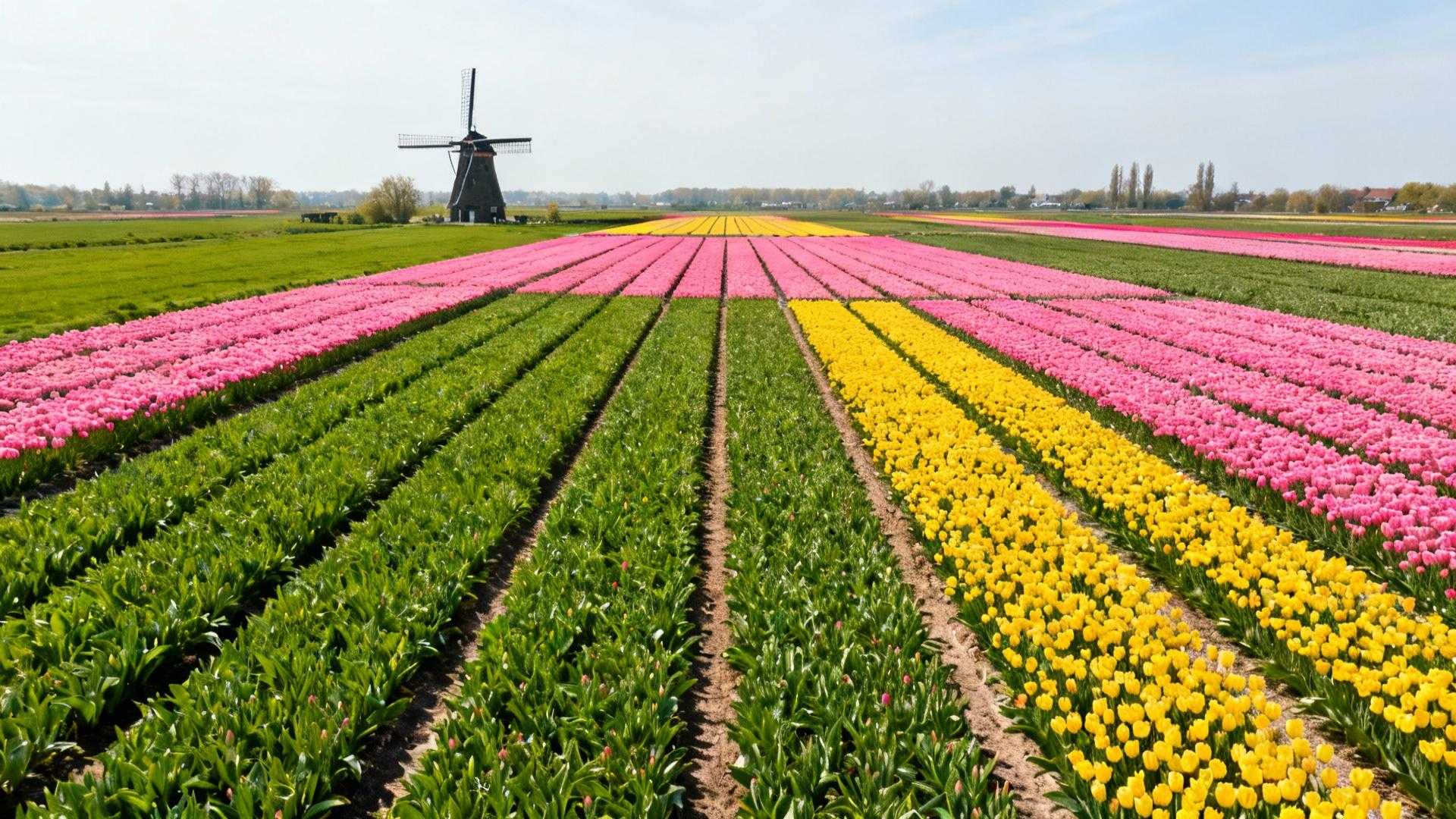I arrived at a private tulip farm near Hillegom at 7 AM on a cool April morning, stepping into rows of crimson and gold that stretched toward the horizon. The farmer, whose family has cultivated these fields for six generations, shared something that made my heart sink: “Every year, more visitors come. We’re discussing limits for 2026.” Standing in that silent, dew-covered paradise, I realized I was witnessing something that might soon require permits to experience.
The Bollenstreek region plants over 7 million bulbs annually across 445 family farms, creating the world’s most spectacular floral display. But this cultural treasure faces mounting pressure. Keukenhof alone welcomed 1.4 million visitors in 2024, with 80% arriving from abroad during an intense 8-week window. Local councils in Lisse and surrounding villages now hold meetings about visitor caps, parking restrictions, and protected access similar to Italy’s Cinque Terre model.
The urgency is real, and the window is closing faster than most travelers realize.
The 8-week bloom window that concentrates global tourism
Why April through early May creates infrastructure strain
Dutch tulip farms orchestrate their blooms through precise autumn planting, with 40 gardeners burying bulbs at three different depths to ensure continuous color from mid-March through mid-May. This engineering marvel means the entire world’s tulip enthusiasts arrive simultaneously. Keukenhof’s 32-hectare gardens accommodate approximately 26,000 visitors per day at peak, while surrounding private farms struggle with unexpected traffic on narrow rural roads designed for tractors, not tour buses.
What locals call “stille uren” and why it matters
Farmers use the Dutch term “stille uren” (silent hours) to describe the magical 7-9 AM window before crowds arrive. During these quiet hours, you’ll see dew clinging to petals, hear only bird songs, and often meet farmers inspecting their fields. This tradition of early morning cultivation has existed for centuries, but tourism pressure now threatens to eliminate these peaceful interactions. Many families privately discuss requiring advance bookings for even these early hours.
The private farm alternatives before permits change access
Beyond Keukenhof’s commercial gardens
While Keukenhof showcases 800+ tulip varieties with artistic precision, the surrounding region holds something more authentic. The Tulip Barn near Amsterdam offers intimate experiences without tour buses, where you can walk between rows and learn traditional cultivation from families who’ve perfected the craft since the 1600s. This hidden Croatian waterfall network has 90+ cascades growing 1cm per year, much like how tulip farmers carefully time each bulb’s emergence through generational knowledge.
Noordoostpolder’s large-scale beauty without infrastructure
In Flevoland province, the Noordoostpolder region stretches vast tulip fields across reclaimed land, offering 70% fewer crowds than Keukenhof during equivalent bloom periods. These working farms welcome visitors organically, without formal admission systems or parking lots. Farmers here express the same concerns about maintaining this casual access, with several indicating 2026 might bring structured visiting hours and vehicle limits.
The cultural heritage at risk from social media pressure
How 17th-century traditions survive in modern families
The Dutch “Tulpengekte” (Tulip Madness) of the 1600s created an economic bubble, but more importantly, it established the Netherlands as the global epicenter of tulip cultivation. Today’s farmers still plant by hand wearing traditional wooden clogs, rotate crops following centuries-old soil management, and harvest bulbs in summer for worldwide export. We explored 900+ bamboo forests and this Kyoto path where Ministry-protected sounds create meditation, demonstrating how cultural protection preserves authentic experiences that mass tourism threatens.
What Instagram doesn’t show about fragile ecosystems
Each bulb requires specific soil conditions, drainage, and careful handling that generations perfected. When visitors step off designated paths for photos, they compact soil and damage underground bulb systems that won’t flower next season. The Bloemencorso flower parade in late April represents community pride, not tourist entertainment, yet increasing crowds now require police traffic control. This tiny Vermont farm has 6-generation maple syrup traditions facing similar pressures from seasonal tourism overwhelming family operations.
How to visit respectfully before restrictions begin
The perfect weather window and transportation logistics
April brings mild 12-18°C temperatures (54-64°F) with 14-hour daylight extending golden hours from 6 AM through 8 PM. Amsterdam Schiphol Airport sits just 20 kilometers away, connected by $12 trains versus $40 Uber rides. Booking Lisse guesthouses now costs around $80 nightly compared to Amsterdam’s $200 rates, while supporting local families who advocate for visitor management rather than tourist bans.
Early arrival strategy that benefits everyone
Arriving during “stille uren” means authentic farmer conversations, empty fields for contemplative appreciation, and photographs without crowds. More importantly, it demonstrates respect for agricultural communities managing both cultivation and tourism. The 2026 bloom window runs approximately April 12 through May 5, with reservation systems potentially launching that season based on current municipal discussions.
Questions about visiting Dutch tulip fields
When exactly should I book for 2026?
Reserve accommodations now for the April 12-May 5 window, as local guesthouses fill quickly and may implement visitor caps. Airlines typically release spring 2026 schedules in October 2025, making this the optimal planning moment.
Can I still visit private farms freely?
Currently yes, though farmers increasingly mention requiring advance notice or implementing visiting hours. Early morning arrivals remain welcome, respecting that these are working agricultural properties, not theme parks.
How does Keukenhof compare to private farms?
Keukenhof offers curated artistry with 7 million bulbs and extensive facilities, while private farms provide authentic cultivation experiences and direct farmer interactions. Both face tourism pressure, making respectful visiting practices essential for preserving access.
